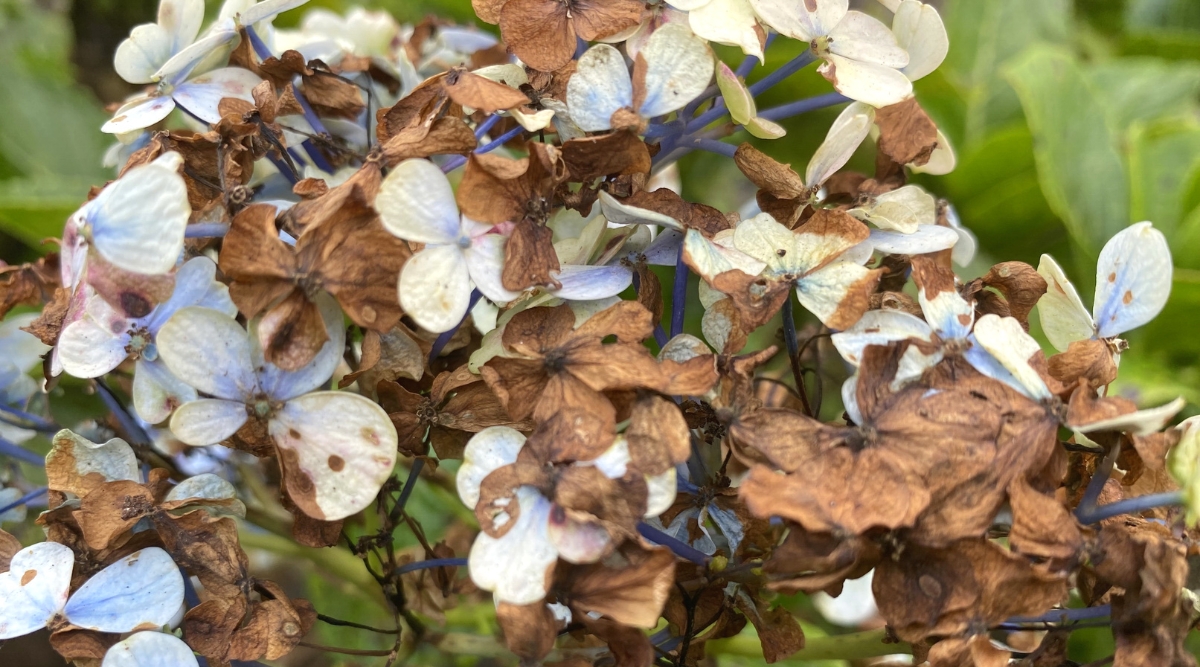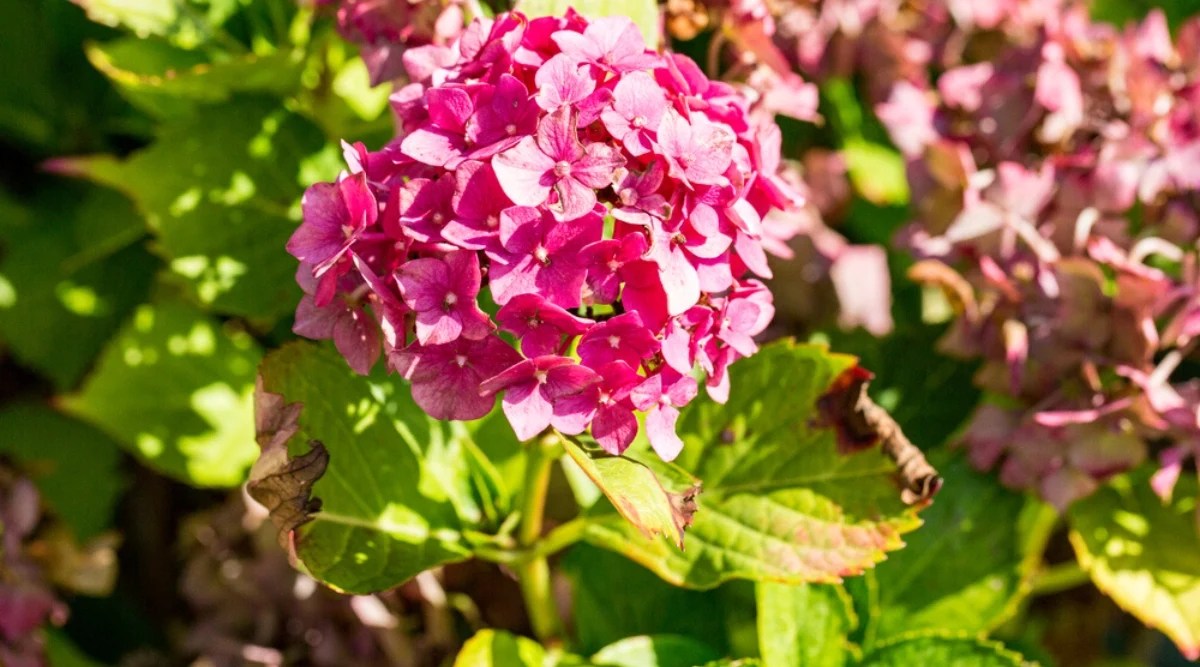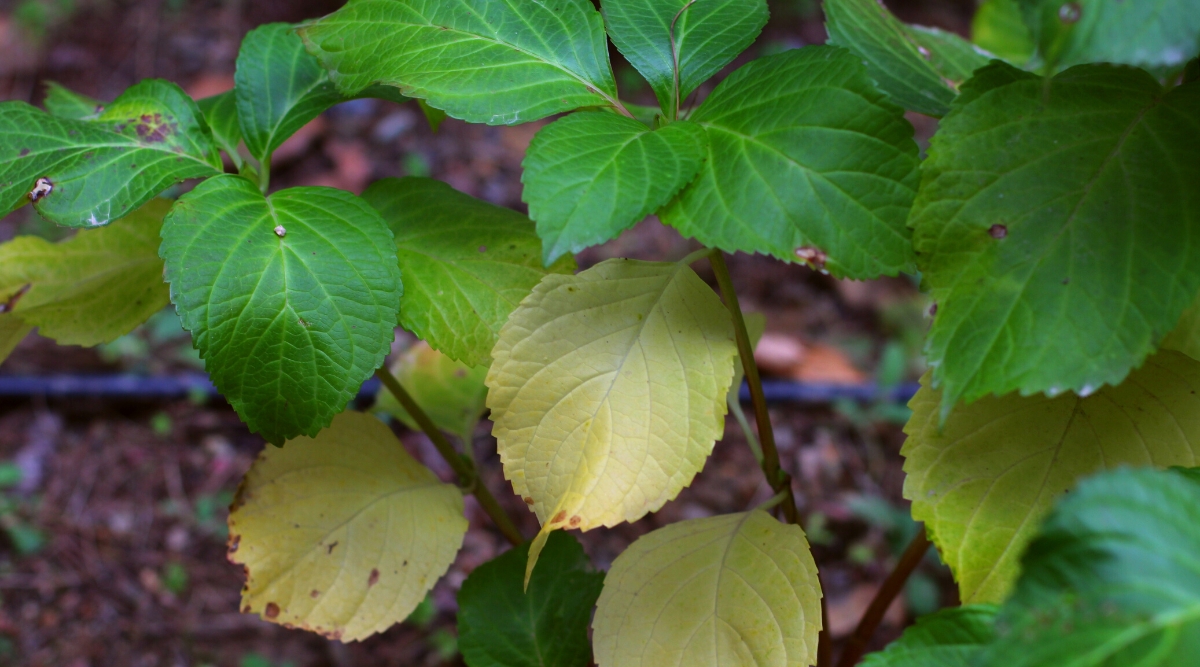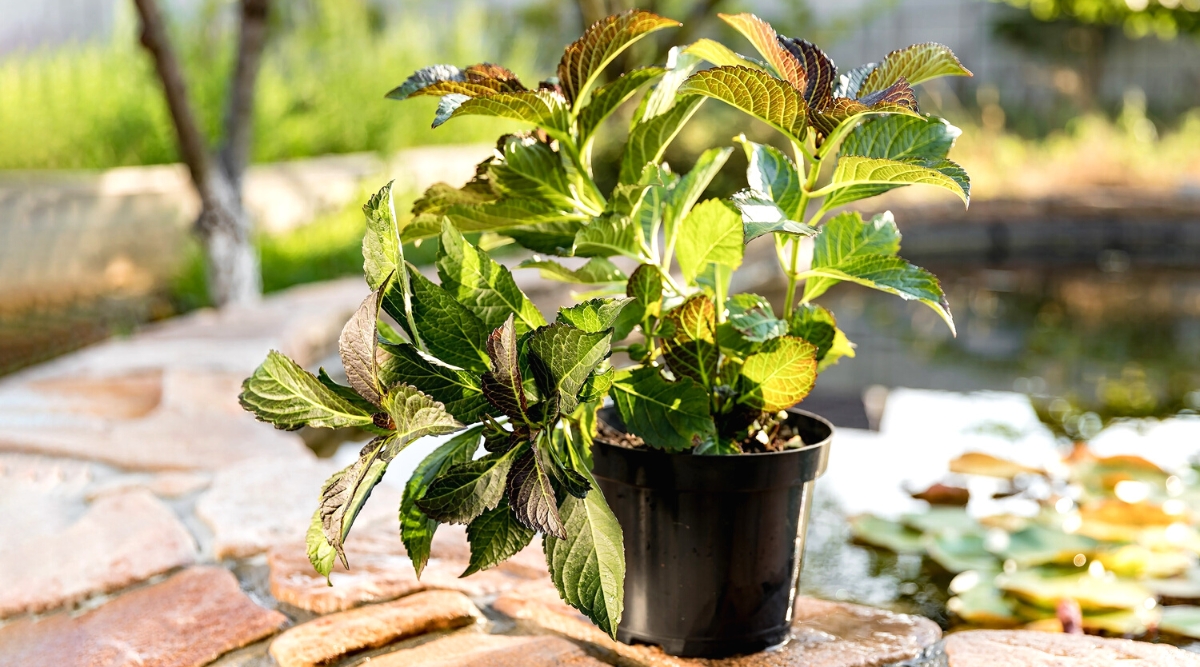Plant Problems
In the heat of the summer it is common for hydrangeas to dry out a little bit , but are you query if your hydrangea is severely underwatered ? Balancing how much hydration your hydrangea needs can be tricky ! In this article , hydrangea enthusiast Jill Drago will round up 7 augury of underwatered hydrangea that you should be looking out for .
Contents

Not many other flowering shrubs sing the call of summer quite like hydrangeas . Their pillowy flowers grace gardens for most of the season , adding coastal charm wherever they ’re planted . With summer come in high spirits temperature and oftentimes dry while , which can cause some issues for your hydrangeas .
Hydrangeas are not bonk for being drouth tolerant . It ’s important for the overall wellness and length of service of your plant to get them on a good watering docket . The finish is to verify that your hydrangeas get about one in of water per week . This can be from a combination of rain and irrigation . Using a rain gauge is a great way to keep track of your watering .
Below I ’ve compile a tilt of7 signs that your hydrangea may be underwatered . Your hydrangea will likely have several of these symptoms before you diagnose them as being badly underwatered . Do n’t choke if you notice one of these symptoms in your seeminglyhealthy hydrangea .

Crispy Flowers
Did your hydrangea bloom beautifully , but the blossom are dead dry out out or even falling off the works ? This is a safe sign that your hydrangea is in need of some piss .
You may notice that the flower petal have begin to work brown and started drying . Hydrangea flowers will begin to dry out until they eventually fall off the plant . This is very normal for hydrangea towards the terminal of the season , butnot at the height of their bloom menstruation .
Unfortunately , there is nothing you’re able to do to turn back time andrejuvenate those flowers . Some flowers may perk back up with a good watering . Even if you lose some blooming , this is an excellent chance to switch up your watering schedule to insure your hydrangea is beat the piddle that it needs .

Drooping Leaves
The easiest and most obvious way to know if your hydrangea is underwatered is by checking out its folio . If the leaves are sag and point downwards , your hydrangea needs some urine . This can bump in the good afternoon sun and is well remedied with a good souse .
Drooping leaf are not always something to vex about , peculiarly if it only happens once in a while . If this becomes a recurring issue , however , you need to reevaluate your plant ’s location and your tearing docket . Depending on what type of hydrangea it is , your plant could father too much sunfor its liking . Panicle hydrangea love the full sun , while bigleaf hydrangeas and the rest of the bunchprefer fond shade .
Along with droop , you may notice that your leaves are becoming crispy , wilting , or curling in on themselves . These are signs that your hydrangea require a right , deadening drink of water .

Brown Leaves
While droop leaves may be the first augury of an underwatered hydrangea , one of the next most common mark is thebrowning of leaves . This can deliver itself in a few different ways . The edges or tips of your leafage mayturn crispy and brown , or you may notice brown , dry splotches throughout your leaves .
brownish bit can also be a sign of a fungaldisease . Fungal disease require a damp environs to thrive . This will make it easygoing for you to square up if your plant just needs water or if you involve to lead out and take hold of some fungicide .
Yellow Leaves
Yellowing leaves on any plant is a sign that something is wrong . In the case of hydrangea , it is a good sign that your flora is either over or underwatered . You will need to put your police detective hat on to determine what incisively is going on with your inflorescence shrubs .
In the case of underwatered hydrangeas , you will belike point out some other symptom in summation to the yellow leave-taking that can help you figure out what is move on with your flora . These symptoms could be dried and crispy leaves or dry stain .
Leaves Dropping
Premature leafage dropping is never a good sign . It is important to remember that all hydrangeas will send packing their parting after a frost or two , so do n’t worry if you notice that happen .
If it is the middle of the summer , however , and yourhydrangea leaves are fall off , it is time to check in with your plant life . When leaves dry out enough , it only takes a gentle gentle wind to come away them from the plant life .
There is nothing you’re able to do to reverse this quickly . Adding compost to your garden and watering until the ground immobilize can help rehabilitate the hydrangea for a skilful growing season the next year .

Slow Growth
Hydrangeas will not grow and produce flowers as expected if they do n’t get enough water . scrawny growth is another symptom that could point overwatering too , so look for some other symptom before treat your hydrangea .
Droopy or dried leaves commonly pair up with underwatered industrial plant . If your plant life can not keep its leaves hydrate , there is no way it will put energy into producing new ontogenesis or vigour - expend flowers . These plant will go into a dormant - like period where they set about to conserve and sustain themselves as is .
Dried out or Dusty Soil
If you detect some of the above signs or symptom , one foolproof way to determine if your hydrangea is underwatered is to check the dirt . If you have mulched your garden bed , this will take a trivial piece of dig . Get down in the dirt , move that mulch out of the way , and feel the dirt around your hydrangea with your hands .
You may be surprised to see that while your mulch appears moist , the soil is actually bone teetotal . The wet in the mulch will eventually make its means into the soil . In the meantime , this is your dirt ’s way of tell you you need to increase watering .
Hydrangeas be intimate moist and well - draining territory . This mean the ground should feel moist to the speck but should not pool . Adding compost to your garden is a good way to aid keep moisture . If you have n’t alreadymulched your gardens , you should opine about doing so . The mulch helps retain moisture and keeps it from evaporate from your soil too quick !

Final Thoughts
If your hydrangea is severely underwatered , take the hydration slow at first . If potential , give your hosiery on a slow drip for a few hours- that is a expectant way to start ! When soil dries out , it can begin to resist weewee .
It takes some irksome scattering for it to relax up again to the compass point where the water absorbs instead of running off . Planting your hydrangea in the good spot andhaving a well watering scheduleis a majuscule way to keep your hydrangea intelligent and happy !

